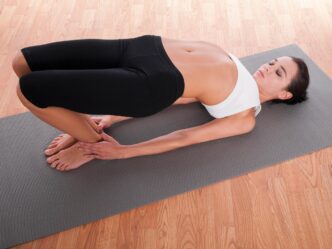A Quick Takeaway
The Story Behind the Trend
How to Make It Work for You
The Community View
Achieving an injury-free workout regimen is a primary goal for anyone committed to a sustainable fitness journey, and the secret weapon to unlock this resilience lies in a robust and stable core. Your core, often misunderstood as just your abdominal muscles, is a complex network of muscles that encircle your torso, stabilizing your spine and pelvis. Developing superior core stability is essential for everyone, from sedentary individuals to elite athletes, because it forms the foundation for all movement, protecting your body from strain and injury while enhancing overall performance.
What is Core Stability?
Core stability refers to the ability of the muscles around your trunk to maintain control over your spine and pelvis during both static postures and dynamic movements. This intricate system includes not only the superficial abdominal muscles, like the rectus abdominis (the “six-pack”), but also deeper muscles such as the transverse abdominis, multifidus, diaphragm, and pelvic floor. These deep muscles work synergistically to create a natural corset, providing internal support and preventing excessive motion.
True core stability is not merely about strength, but about coordinated muscle activation that allows for efficient force transfer throughout the body. It enables you to resist unwanted movements, like twisting or arching your back, and ensures that your limbs can move powerfully and safely. Without this foundational stability, other parts of your body are forced to compensate, leading to inefficient movement patterns and a heightened risk of injury.
The Crucial Role of Core Stability in Injury Prevention
A strong and stable core acts as the body’s central brace, distributing forces evenly and protecting vulnerable areas from undue stress. This protective mechanism is vital across all forms of physical activity, from lifting groceries to performing complex athletic maneuvers.
Protecting the Spine
The core muscles play a paramount role in safeguarding your lumbar spine, which is particularly susceptible to injury. When you lift, bend, or twist, a stable core prevents excessive arching or rounding of the lower back, ensuring that the spine remains in a neutral, protected position. This significantly reduces the risk of common back injuries, such as disc herniations or muscle strains, which are often the result of poor core engagement.
Enhancing Joint Integrity
Core stability extends its protective influence beyond the spine, impacting the integrity of peripheral joints like the hips, knees, and shoulders. A weak core can lead to compensatory movements in these joints, forcing them to absorb forces they aren’t designed for. For instance, instability in the pelvis can manifest as knee pain or hip impingement, while a lack of trunk control can contribute to shoulder injuries during overhead movements. By providing a stable base, the core ensures that your limbs can move through their intended range of motion without unnecessary strain.
Improving Balance and Posture
An often-overlooked benefit of core stability is its direct impact on balance and posture. A strong core allows you to maintain an upright posture, reducing strain on the neck and shoulders, and improving overall body alignment. Enhanced balance, a direct result of improved core control, is critical for preventing falls in daily life and optimizing performance in sports that require quick changes in direction or single-leg stability.
Beyond Injury: Performance Benefits of a Strong Core
While injury prevention is a primary driver for core training, the benefits extend significantly into performance enhancement. A stable core allows for more efficient transfer of power from your lower body to your upper body, and vice versa. This means you can run faster, jump higher, lift heavier, and throw with greater force and precision, as less energy is wasted on stabilizing the trunk.
Athletes in virtually every sport rely on their core for explosive movements and sustained endurance. From the rotational power needed in golf and baseball to the stability required for a heavy squat or deadlift, the core is the linchpin of athletic prowess. Improving core stability translates directly into better movement economy and overall athletic output.
Integrating Core Stability into Your Routine
Building a resilient core doesn’t require endless crunches; it demands a focused approach on exercises that challenge your core’s ability to resist movement and maintain stability. Consistency and proper form are far more important than intensity.
Foundational Exercises
Start with fundamental core stability exercises that teach your muscles to work together effectively. The plank, in its various forms (front plank, side plank), is excellent for building isometric strength and endurance. The bird-dog teaches spinal stability while moving limbs, and the dead bug focuses on anti-extension, preventing the lower back from arching. These exercises emphasize control and precise muscle activation over brute force.
Progressive Overload and Variety
As your core strength improves, progressively challenge your stability. Incorporate exercises that demand anti-rotation (like pallof presses), anti-lateral flexion (like single-arm farmer’s carries), and dynamic stability (like medicine ball throws or Turkish get-ups). Varying your exercises ensures comprehensive development of all core musculature and keeps your body adapting.
Mind-Muscle Connection
Crucially, focus on the mind-muscle connection during core exercises. Consciously engage your deep abdominal muscles by drawing your navel towards your spine and bracing your entire trunk, as if preparing for a gentle punch. Proper breathing techniques, such as diaphragmatic breathing, can also significantly enhance core engagement and stability.
Key Takeaways for a Resilient Body
Prioritizing core stability is not just an adjunct to your fitness routine; it is the cornerstone of a healthy, injury-free, and high-performing body. By understanding what your core is, how it functions to protect your spine and joints, and how to effectively train it, you empower yourself to move with greater confidence and efficiency. Integrate foundational core exercises into your workouts consistently, focusing on control and proper form, and you will unlock a level of physical resilience that transforms your entire fitness experience.







